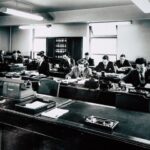Reconstruction is often treated as a brief and complicated chapter in U.S. history. But for African Americans, it was a period of real political promise. During that time, many Black men were able to vote and hold public office. For a while, it looked like the country might finally live up to its democratic ideals. But that progress was later reversed, and the effects of that rollback are still seen today. If you want to understand voting rights today, especially for African Americans, you need to understand what happened during Reconstruction and what was lost afterward.
African Americans and the Fight for Political Inclusion
Black people have always pushed to be part of America’s democracy. The right to vote was never something taken lightly. Even before it was guaranteed by law, there was a strong demand from African Americans to be included in political life. After the Civil War, during Reconstruction, this dream became real. Thousands of Black men were elected to office. At the time, many southern states had large Black populations, and those voters were able to elect Black leaders. These leaders helped build systems that benefited everyone—like public schools that served both Black and white students. It was a time when democracy seemed closer to being equal. But that progress didn’t last.
The Power of Reconstruction-Era Representation
During Reconstruction, roughly 2,000 African American men held office at every level of government—from the U.S. Senate to local councils. One important figure was Hiram Revels, who became the first Black U.S. Senator. He represented Mississippi and had a long record of work in education and civil rights. The idea that African Americans could vote and be elected to high office was not just symbolic—it changed lives. New laws, better schools, and better services came from Black political power. But this growth in representation also created backlash. White supremacists who had lost power wanted to take it back, and they used violence and legal tricks to do it.
How Voter Suppression Took Hold After Reconstruction
After Reconstruction ended, white leaders in the South worked hard to stop Black people from voting. They couldn’t say outright that Black people were banned from voting—because of the 15th Amendment—but they found other ways. Literacy tests became a common tactic. These tests were not about reading or knowledge. They were about giving local officials the power to reject Black voters. If you were white, you passed. If you were Black, you usually didn’t. Over time, these efforts cut down Black voter numbers across the South. By 1900, voting rights for African Americans had been nearly erased in many areas.
Why Some Still See Reconstruction as a Failure
For years, Reconstruction was wrongly described as a time of chaos and failure. Textbooks often said it was filled with corruption and poor leadership. But this version of the story served a purpose—it helped justify the rise of Jim Crow laws. If people believed that giving Black men the vote had caused problems, it became easier to support laws that kept them from voting again. This thinking shaped how many Americans saw history. The truth is, Reconstruction showed what American democracy could look like at its best. It was the first time that all men, no matter their race, had a chance to be part of the political system.
Modern Voter Suppression Still Targets Black Voters
Even though literacy tests are gone, modern voter suppression still exists. After the 2020 election, many states passed laws that make it harder to vote. These laws often affect Black voters the most. Some rules cut down on early voting, others close polling places in majority-Black neighborhoods. Others remove people from voter rolls for unclear reasons. These steps might not look like the old laws, but they work the same way. Groups like Fair Fight Action are now trying to fight these laws. They want new protections, like the John Lewis Voting Rights Act, to help stop targeted efforts to silence voters of color.
Why Voting Rights Still Need Protection
Reconstruction showed how quickly voting rights can be lost. After a period of progress, Black voters were pushed out of the system through violence, bad laws, and false stories. That’s why it’s not enough to assume rights will always stay in place. Without protection, even basic rights can be taken away. Today’s legal changes might not be as obvious, but they can still stop people from voting. Learning about Reconstruction helps you understand how fragile democracy can be. It also helps you see why voting laws today matter, especially when they affect some communities more than others.
What History Can Teach About the Present
The idea that progress always moves forward doesn’t match the facts. In the late 1800s, Black Americans had more political power than they did in much of the 1900s. That should make you pause. It means rights can be taken away, even after they’ve been won. The cycle of progress and pushback is something seen over and over in American history. So, when voter suppression happens today, it’s not new—it’s part of a pattern. Understanding that pattern helps explain why some lawmakers are still trying to limit who can vote. It also shows why voting is not just a right but something that must be protected by law and by action.
The Promise of Reconstruction Still Matters Today
Reconstruction gave a glimpse of what American democracy could be. It wasn’t perfect—Black women still couldn’t vote, and racism didn’t disappear. But for the first time, the country came close to giving everyone a voice. That moment matters. It shows that fair voting is possible, and that representation can lead to real change. Today, if you want to support equal voting rights, you have to understand where the system has failed before. That includes looking closely at the laws being passed now and asking who they help—and who they hurt. Only then can you help protect what was once gained and then lost.



